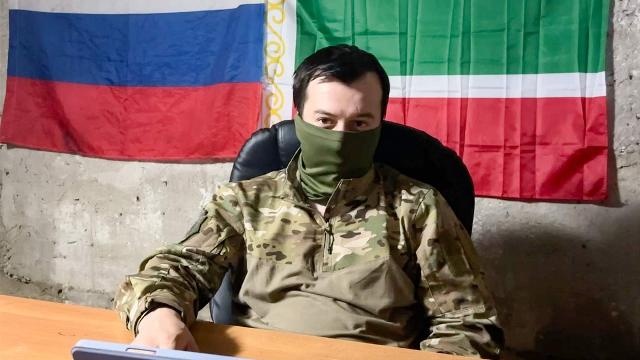Commander of the Akhmat Special forces reconnaissance group Hades — about NATO equipment in the border area, tactics of the Armed Forces of Ukraine and forest battles
In the Kursk region, our fighters are faced with almost all the equipment of NATO countries that they supplied to Ukraine — and almost all of it burns well, says the commander of the Akhmat special forces reconnaissance group with the call sign Hades. For four weeks now, his unit has been fighting with the Armed Forces of Ukraine units that attacked the region. Hades told Izvestia in an interview about how he managed to destroy almost 40 armored vehicles in the first day, what tactics the enemy uses near Kursk and why the French Krotal anti-aircraft complex was burned by accident.
"The fighting starts at four in the morning and ends at one in the morning. And so it has been without a break for four weeks now."
— How would you characterize the situation in the Kursk region?
— She is very intense, but she is working and controlled. In the early days, the situation was critical, the enemy broke through. A large number of equipment, personnel, artillery, air defense, radar. The mechanized fist attacked us, and then we had just arrived from the Kharkov direction, from Volchansk. In the first week of fighting, we ground them up and now the situation is fully controlled, there is a line of defense, and we can safely conduct positional combat operations. At the moment there are nine brigades of the Armed Forces of Ukraine, there are also several regiments. These are those who are involved in the so-called offensive operation here. So there is a lot of enemy, there is enough equipment and personnel.
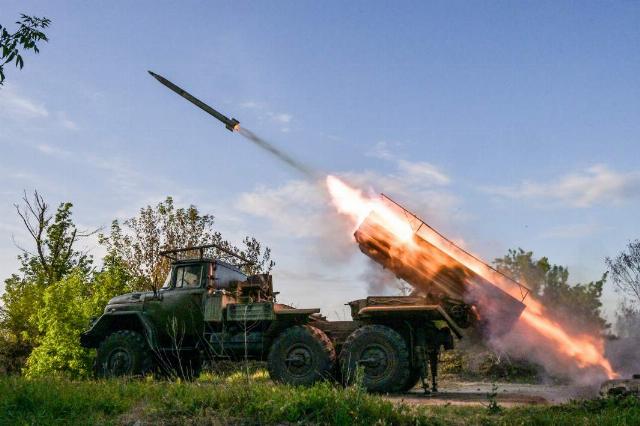
Servicemen of the Armed Forces of the Russian Federation are firing from MLRS "Grad-1"
Image source: Photo: RIA Novosti/Evgeny Biyatov
— How are the fights going?
— They start at four in the morning and end at one in the morning. And so it has been without a break for four weeks now. And now we have artillery working, grinding the enemy.
— How did you manage to stop the offensive?
— On the first day, we destroyed 39 armored vehicles and tanks, on the second — 20 units, on the third — 13. Now we cannot boast of such indicators, we destroy one or two armored vehicles a day and several pickups, because they no longer drive so actively. Either they are relocating, or they are exhausted. Time will show.
"Whole battalions went — about two thousand personnel, and there were 256 of us"
— What tactics do the Armed Forces of Ukraine follow in the Kursk region?
— In four weeks, they have changed several tactics. On the first day of the offensive, they followed the tactics of the flower. What's the point? That's the line of defense. You probe it, look for a thin area, and break through. And your task is to fill the area behind the enemy's broken defense line with personnel, armored vehicles, artillery and cover up with air defense as soon as possible. You have sated it, you go forward again and open the flower — you lead the offensive in different directions. Again, you are looking for places where it breaks. They found a gap somewhere and repeated it. They opened these flowers in different areas, so there was a ragged front line. We had to stabilize her. Which we did.
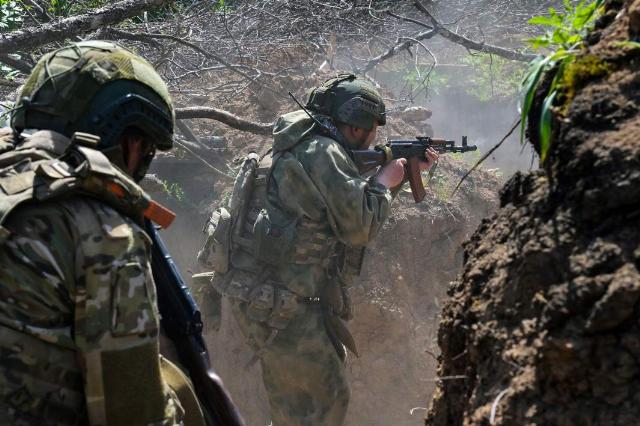
Military personnel of the Armed Forces of the Russian Federation
Image source: Photo: RIA Novosti/Evgeny Biyatov
— And then?
— They switched to the tactics of a mechanized wedge. There were columns of tanks, armored fighting vehicles, and there were also 30-millimeter cannons. My respect when they work in a column. On the first day, 39 out of 45 units were destroyed by us — this is Martynovka, there is a new Prokhorovka turned out. Whole battalions went — about 2 thousand personnel. On the first day, we destroyed 39 pieces of equipment, on the second — 20, on the third — 13. The troops began to burn down in these vehicles, not having time to disembark. If it did work out, then the cars were burned, and the infantry was cut off and destroyed by us.
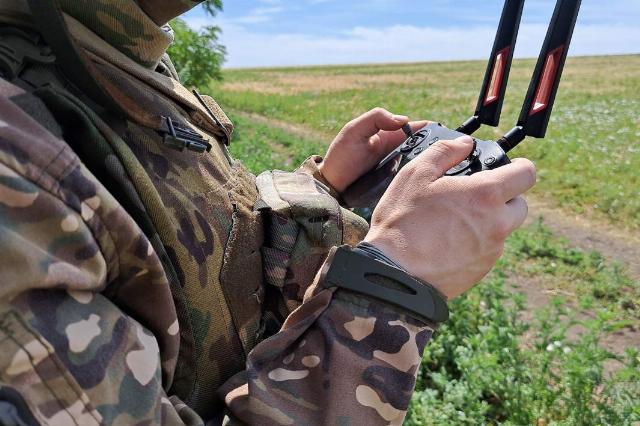
A soldier of the Armed Forces of the Russian Federation
Image source: Photo: IZVESTIA/Dmitry Astrakhan
— After this failure, did they change tactics again?
— Yes, they switched to their favorite tactic, which they took from us — actions in small groups. But then everything ended as usual. They moved on to "meat attacks". In recent days, the APU has tried to use our "accordion" tactics. An assault echelon is coming, followed immediately by a reinforcement group. Figuratively, the stormtroopers are clearing the landing. The task of the reinforcement group is to jump over the stormtroopers and dig in. As far as possible by creating a foothold. A new assault group is approaching the bridgehead, advancing. As soon as she has cleared the area, a reinforcement group jumps behind her. On the first day, when they used the "accordion" tactics, only one of the assault and reinforcement groups survived — he was captured. No one survived on the second day. On the third day, the pattern was repeated.
"The Kursk campaign is a big meat grinder for grinding enemy parts"
— How seriously is the enemy working in our rear?
— "Himars" (MLRS HIMARS. — Izvestia) They beat me. They worked directly for us twice a week. The benefit is past. We have destroyed two installations in the Kursk direction. They are now firing from a bag. In addition, they are trying to fight our aviation. New air defense systems are also being used. A sad story happened to the French Krotal air defense system. We turned one of them into scrap metal.
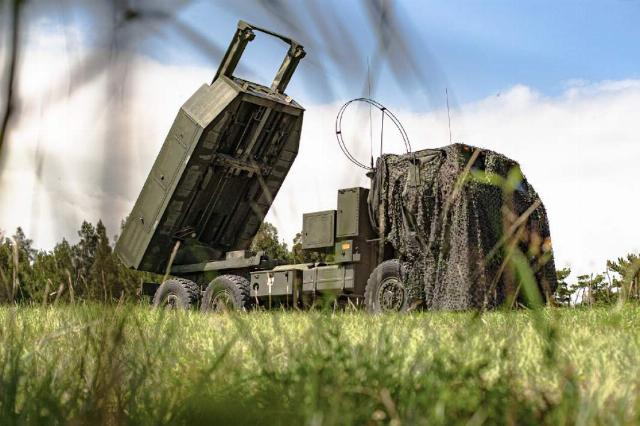
HIMARS MLRS
Image source: Photo: TASS/ABACA
— How was it?
— Our Ka-52 helicopters hovered over the landing and began to beat the enemy. At that moment, my UAV operator was flying to Suju to see who was riding there. He saw an unknown car driving out into the field. The operator became curious, he turned around and flew there. The EW was working hard on the car. But our operator passed it. The explosion was good, even in Kursk they saw it. Then it turned out that it was the Krotal air defense system, which went out to strike at our helicopters. They were just being guided when our drone flew by.
— Is the Krotal a modern car?
- yes. In France, only 10 of them were made, € 8 million is worth one installation. And this, in my opinion, is the cost price. The drone costs around 50-60 thousand rubles, including the price of a cumulative projectile. It was enough to stab well.
— How are things with RAB?
— They try to hide behind it everywhere. Even their assault groups run around with electronic warfare backpacks, foreign ones. They are trying to organize defense with the help of armored vehicles like Marder or Bradley with electronic warfare — they put them in a square to close the space inside from drone attacks. After we burned the columns for them, they realized the mistake and lined up in squares. Somehow we broke through the electronic warfare and knocked out one. The square disappeared, and we burned the others. Tanks — even isolated ones — they work under the cover of armored vehicles with electronic warfare. But they're burning too. They were not ready for drones that are controlled by fiber optic cable.
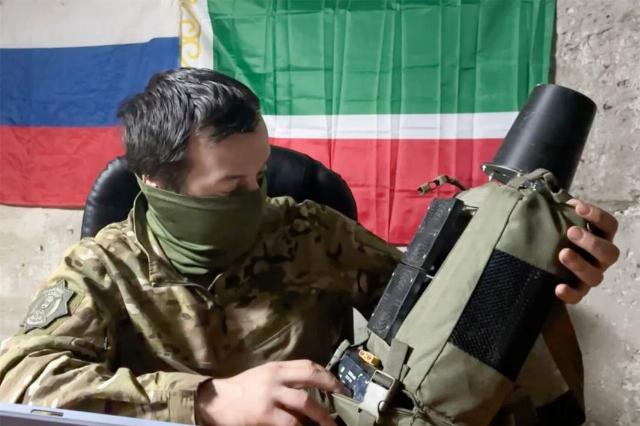
Captured backpack of the AFU soldiers with an electronic warfare system
Image source: Photo: IZVESTIA/Bogdan Stepovoy
— There are intense battles in the forests now. What's going on there?
— They hide personnel and troops in the forests. But we have an excellent argument in the form of bombs FAB-500, FAB-1000 and FAB-2000 — we strike with them. Few survivors leave there. We have excellent VKS, turntables that bury the enemy in these forest plantations. At the moment, the Kursk campaign is a big meat grinder for grinding enemy parts.
But they are removing parts from Donbass and sending them here. Instead of strengthening the Ugledar direction, the enemy removes from there the only combat-ready 72nd brigade, which stood there for two years. They went all in.
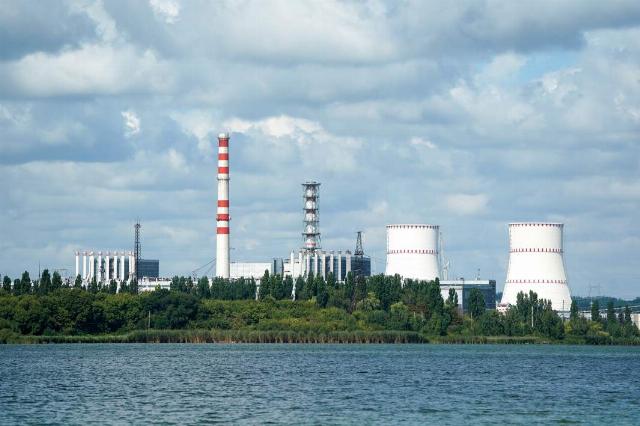
Kursk NPP
Image source: Photo: IZVESTIA/Pavel Volkov
— For what?
— I think we should try to take Kursk, the nuclear power plant. And to issue an ultimatum at the negotiations. This is terrorism. We do not negotiate with terrorists. Everyone who entered the Kursk region will die here.
"We thought that they would fly in on a relaxed flight, but the safari broke off"
— Have you ever encountered mercenaries?
— Yes, they were there on the first day, but these are not just foreign or Georgian legions, where Poles or Georgians serve. There were serious PMCs here, the so-called FOG (American private military company Forward Observation Group. — Izvestia) and foreign companies in the UK. But they got out of here together. They thought they would fly in on a relaxed flight, but the safari broke off.
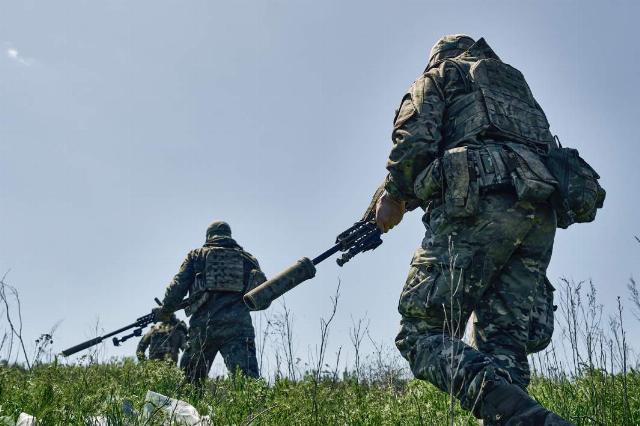
Soldiers of the Armed Forces of Ukraine
Image source: Photo: AP/ Libkos
— How long did they fight here?
— A week was enough for them. I read the lament of one of the mercenaries that they were promised one thing, but it turned out to be another. Everything is stretched, everything is bad. It doesn't make it any easier for us, of course, but facts are facts. The mercenaries were not ready for such a fight. Because, in my experience, they are used to fighting in ideal conditions. As soon as they get kicked in the teeth, they get very sad.
— What were the mercenary formations responsible for?
— In general, foreign specialists in Ukraine, especially PMCs, do not perform assault functions. They perform the functions of DRG, snipers, special, protective detachments of sweeps. For such a thankless task as the "meat assault", there are horsemen.
— What kind of Western technology have you encountered here?
— We came across a huge number of Marders, Strikers, Bushmasters, Max Pro, M-113, Finnish armored personnel carriers. Of the tanks — "Challengers", "Abrams". There were also American Bradley infantry fighting vehicles. In general, any type of NATO equipment that was transferred to Ukraine, up to the Krotal air defense system, can be found.
— Do they have almost no Soviet equipment left?
— There is. Moreover, as practice has shown, it is stronger than the NATO one. Half of the equipment transferred to the APU is junk. It's the same Soviet years, 1973 or 1983. But unlike ours, it has never been distinguished by quality. And it burns well.
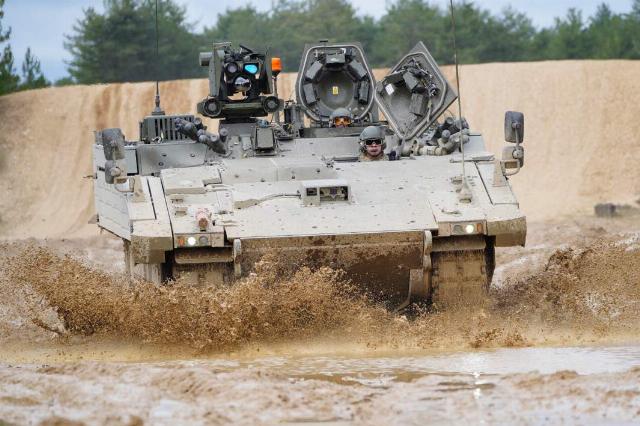
Challenger 2 Tank
Image source: Photo: AP/Ben Birchall
— They say that "Max Pro" is durable.
"The Bradley burns hard enough. "Max Pro" is very durable, indeed. We destroy it from the second or third drone. After the first one, they usually run out of the car, and it is not difficult to finish off the abandoned equipment. They don't need much. I gave it to them from a drone once, and they were already scattered.
"Everyone who turned out to be here went to attack, but they only stepped on a rake"
— What is the morale of the enemy units?
— At the beginning of the Kursk campaign, they were very enthusiastic. They thought it would be like this. As soon as we kicked them in the teeth in the first week and put two battalions there along with equipment, they were very sad. The radio intercepts say: "We can't take it anymore, take us away, we need a psychologist." The commander reassures them: "Hold on, be men, you are not the only ones fighting." Their condition is already not so good. They keep making new ones. What to do, we'll have to bury everyone.
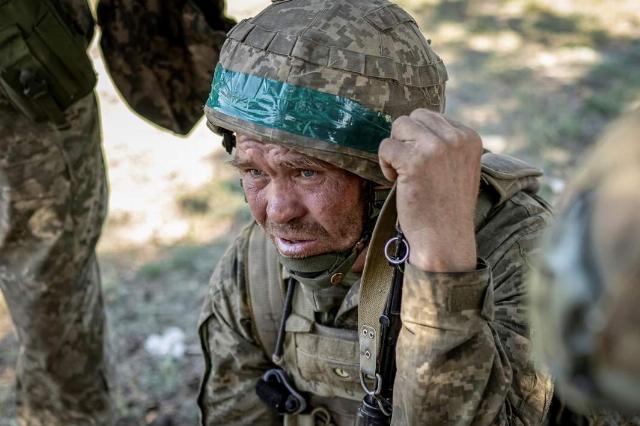
A soldier of the Armed Forces of Ukraine
Image source: Photo: REUTERS/Viacheslav Ratynsky
— How do the APU treat Russians?
— Some kind of animal treatment, they kidnapped people and took them somewhere and killed everything they did. They lost their human form long ago. But they will have to answer for what they have done.
— What do the prisoners tell us?
— Everyone says that he was caught on the street and thrown here. But there is a small nuance. All the survivors I interrogated have been in the war zone since February–March 2023. In a year and a half in a war zone, even a mobilized person becomes a specialist. They are all with combat experience, mainly from the Avdiivka direction. All of them were trained in Germany or the UK. There was nothing that they said: "I didn't study."
One of the 10 was trained by NATO instructors in Poltava. They came to them. And the other nine studied either in the UK with SAS (Special Air Service — special forces) or in Germany. All the units that entered here are assault, except for the defense. And then there are assault battalions in the terroboron. Everyone who turned out to be here went to attack, but they only stepped on a rake.
Bogdan Stepovoy
